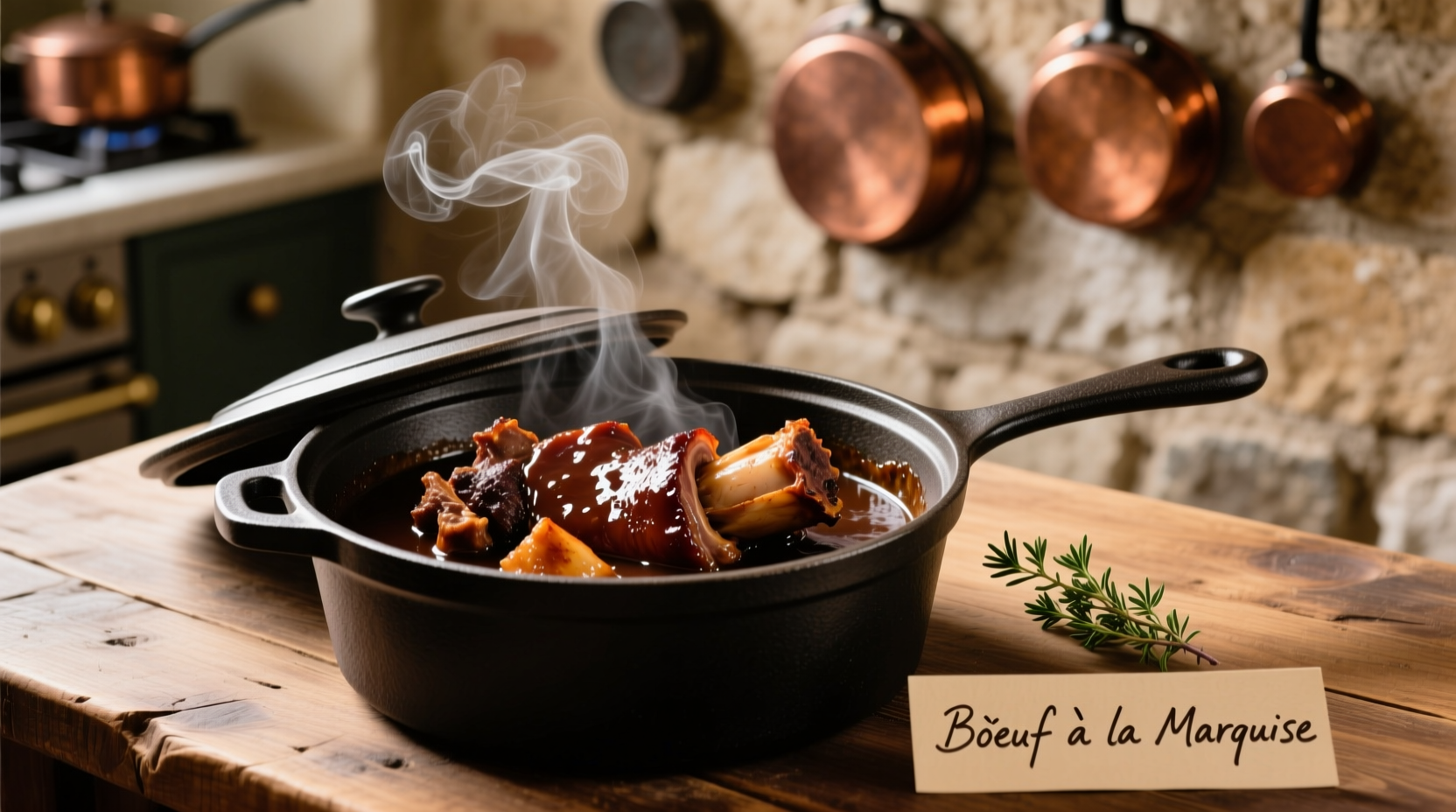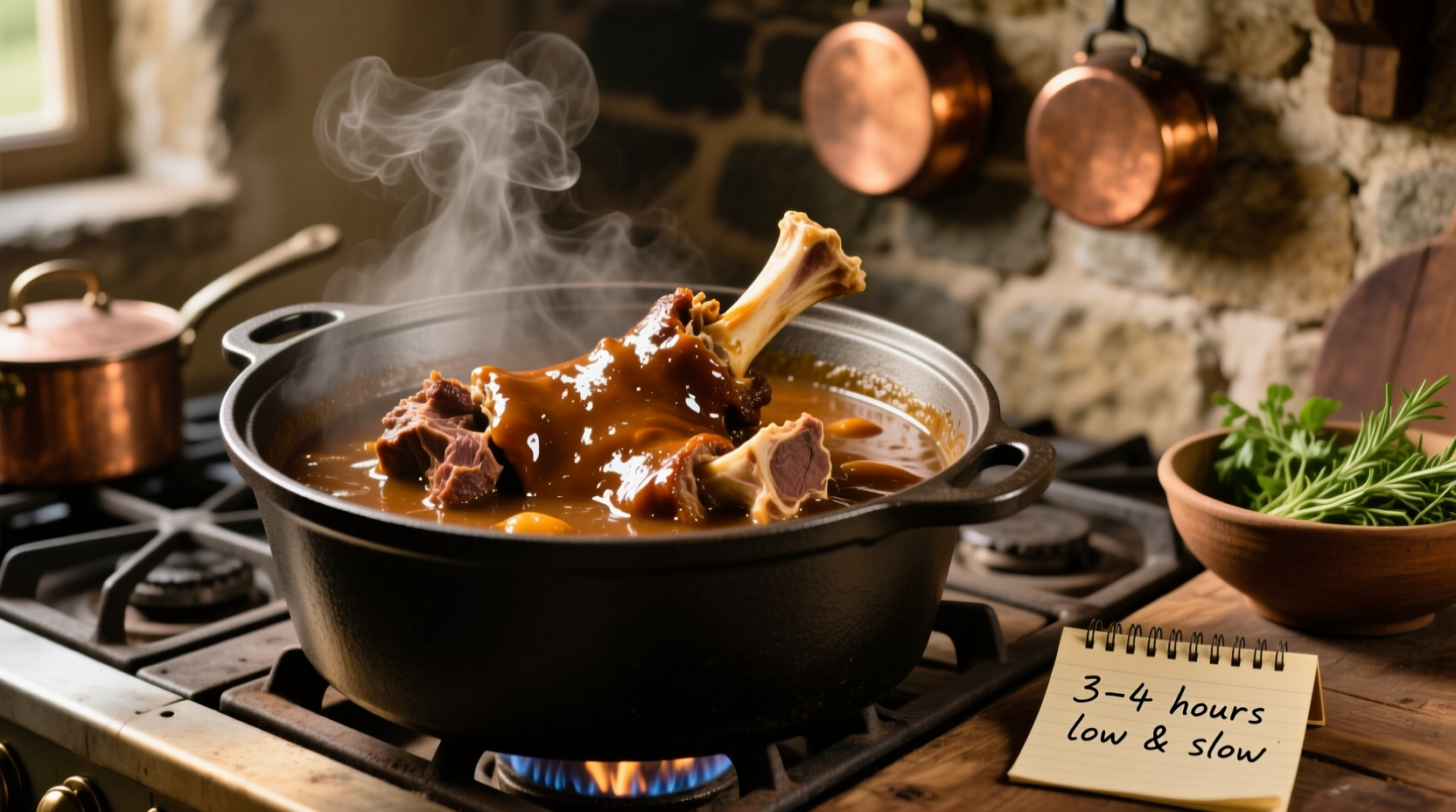Ever wondered why your oxtail turns out tough despite hours of cooking? The secret lies in understanding collagen breakdown and proper cooking techniques. This guide delivers precise timing for every cooking method, helping you transform this collagen-rich cut into fork-tender perfection every time.
Why Oxtail Needs Extended Cooking Time
Oxtail's high connective tissue content demands patience. Unlike muscle meats that cook quickly, oxtail contains abundant collagen that must convert to gelatin through slow, moist heat. This transformation begins around 160°F (71°C) and continues through 205°F (96°C), explaining why rushed cooking yields rubbery results. Professional chefs confirm that undercooked oxtail remains chewy while overcooked versions lose structural integrity.
| Cooking Method | Prep Time | Cooking Time | Doneness Indicator |
|---|---|---|---|
| Traditional Braise | 20 minutes | 2.5-3.5 hours | Falls off bone with light pressure |
| Pressure Cooker | 15 minutes | 45-60 minutes | Meat separates easily from bone |
| Slow Cooker | 15 minutes | 6-8 hours | Shrinks significantly from bone |
| Oven Braise | 20 minutes | 3-4 hours | Collagen fully converted to gelatin |
Collagen Transformation Timeline
Understanding the science behind oxtail cooking reveals why timing matters. The USDA Food Safety and Inspection Service confirms that collagen breakdown occurs in distinct phases:
- 0-60 minutes: Initial browning develops flavor but connective tissue remains intact
- 60-120 minutes: Collagen begins melting, meat starts tenderizing
- 120-180 minutes: Optimal transformation window for traditional methods
- 180+ minutes: Risk of overcooking and texture deterioration

Pressure Cooking: The Time-Saving Solution
Modern appliances dramatically reduce cooking time while maintaining quality. According to pressure cooking research published by the National Center for Home Food Preservation, high pressure raises the boiling point of water, accelerating collagen breakdown. For best results:
- Sear oxtail pieces first for enhanced flavor
- Add sufficient liquid (minimum 1 cup)
- Cook at high pressure for exactly 45 minutes
- Allow natural pressure release for 15 minutes
Critical Factors Affecting Cooking Time
Several variables impact your oxtail's cooking duration. Recognizing these context boundaries prevents disappointing results:
- Cut thickness: Thicker sections need 20-30% more time
- Starting temperature: Refrigerated meat adds 15-20 minutes
- Altitude: Above 3,000 feet requires 5-10% longer cooking
- Pot size: Tight-fitting lids reduce evaporation and cooking time
Doneness Testing: Beyond the Clock
Timing provides guidance, but sensory verification ensures perfection. The American Meat Science Association recommends these doneness indicators:
- Visual: Meat shrinks significantly from bone (about 1/4 inch gap)
- Tactile: Fork slides in with no resistance, meat pulls away cleanly
- Texture: Gelatinous consistency in cooking liquid when cooled
- Internal temp: 200-205°F (93-96°C) for optimal collagen conversion
Common Mistakes and Time-Saving Tips
Avoid these frequent errors that extend cooking time unnecessarily:
- Boiling instead of gentle simmering (causes toughness)
- Insufficient liquid coverage (dries out meat)
- Opening lid frequently (loses heat and extends time)
- Skipping initial sear (reduces flavor development)
Professional kitchens often freeze oxtail before cooking to improve texture. The Food Science Department at Cornell University found this technique helps maintain structural integrity during long cooking. Simply freeze overnight, then thaw completely before cooking for optimal results.
Safety Considerations for Oxtail Preparation
Proper handling ensures both quality and safety. The USDA Meat and Poultry Hotline recommends:
- Refrigerate raw oxtail below 40°F (4°C)
- Cook to minimum internal temperature of 145°F (63°C)
- Consume within 3-4 days or freeze cooked oxtail
- Never partially cook and refrigerate for later completion











 浙公网安备
33010002000092号
浙公网安备
33010002000092号 浙B2-20120091-4
浙B2-20120091-4